You’ve come to the right place if you want to learn how long you need to walk to lose weight. While there’s no simple answer, I’ll guide you through the necessary steps and considerations for making a walking routine worth your while. I’m a certified exercise physiologist and a running coach (don’t worry, I know all about walking, too), and I’m happy to help!
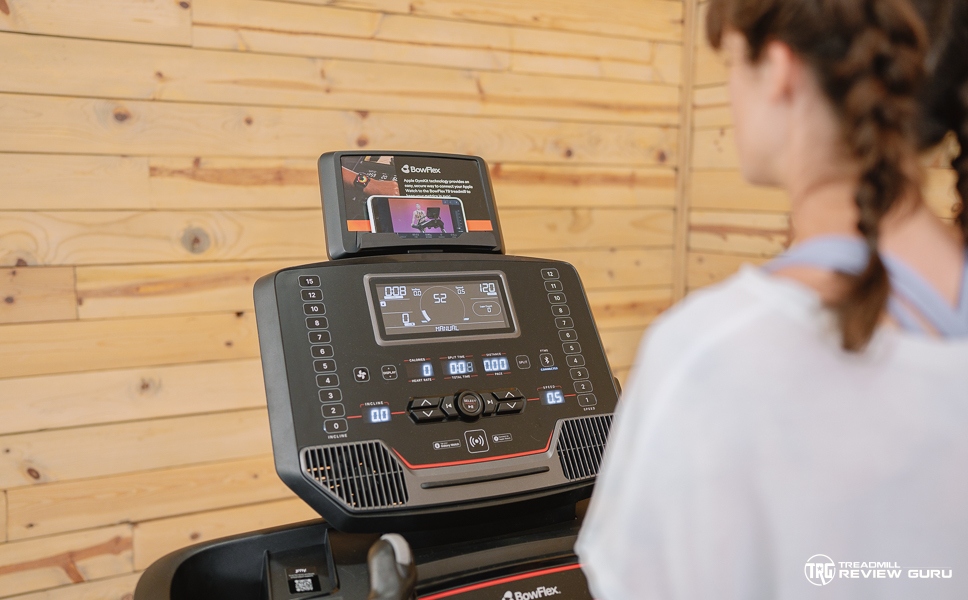
Nutrition is Key
Walking is an excellent part of a weight loss routine, but the first thing you need to know is how important diet is. Even if you walk for eight hours per day, it’s possible not to lose a pound if your diet doesn’t support you.
To lose weight, you need to be in a caloric deficit, which means that you are burning more calories than you consume. This post does not cover diet advice, and I recommend consulting with a registered dietitian if you need help with meal planning. It’s one of the most crucial components of weight loss.
Video
Walking and the Caloric Deficit
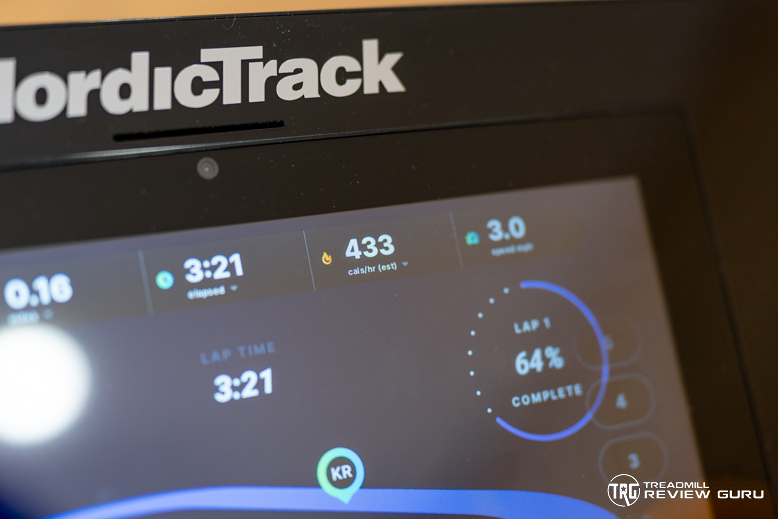
Remember that treadmill calorie trackers are not always the most accurate.
Walking can contribute to a caloric deficit, as every minute of exercise burns more calories than you would if you were sedentary. Being sedentary is time that you spend awake, but sitting or lying down. Essentially, any time you are relatively still.
Adding walking into your routine not only burns more calories but reduces the amount of time you spend sedentary.
Walking for 30 minutes burns between 100 and 200 calories. The exact number depends on factors such as your walking speed, incline grade, and metabolic rate. Your metabolic rate is the rate at which you burn calories. It is affected by a variety of factors, such as your age, weight, and body composition. For example, the more you weigh, the more calories you will burn per minute.
If you walk for 30 minutes per day and burn approximately 150 calories, you could burn 1,050 calories per week. If you keep that up for a whole year, you would burn over 15 lbs from walking alone. That’s 54,600 calories burned.
Walk for 1 hour, and you could burn 300 calories per day and over 100,000 calories in a single year. That’s 30 pounds of weight loss from just walking!
Remember that the less you weigh, the fewer calories you burn. That means to keep burning the same amount of calories throughout that year, you will need to progress your workouts.
For example, if your walks started at 3 miles per hour with a 5% grade, you will need to increase your incline or speed to maintain the same calorie burn. You can also increase the amount of time you spend walking to burn more calories. You could walk 4 miles per hour or at a 10% grade.
Walking Time
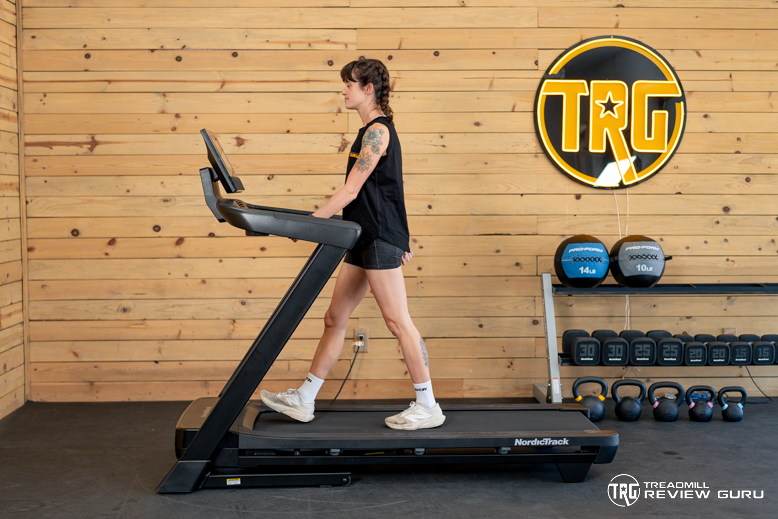
There are many factors to consider when deciding on the right walking duration.
Learn more about the appropriate time to spend walking, broken down by session and by week. Even if you have to start small, you can progress your walking time to achieve big goals.
Session Time
I recommend a starting goal of 30 minutes for walking, but that doesn’t mean your first few weeks of walking have to include 30-minute walking sessions.
For the sake of this example, consider a “walk” to be walking at a faster pace with the intention to exercise. I’m not talking about walking at a leisurely pace, as you might when getting ready for work or walking to your office.
If you don’t walk at all currently, begin with shorter bouts. Five to ten minutes of walking once or twice per day can be a good start if you have been sedentary so far. Add one to five minutes to your walking sessions as you become more comfortable with the amount of walking you can do.
Your walking sessions should challenge you. If you can complete your walking sessions without much difficulty, that’s a sign it’s time to increase the time of your walk. Your walks don’t have to feel intense the entire time, but you should feel like you are working, not entirely relaxed, at least by the last few minutes.
When you first start walking, you may only be able to do one or two sessions per week. To increase the amount of time you are walking per week, add in additional sessions as you can tolerate them.
It’s okay to feel sore or tired. Try to take no more than two rest days in a row to keep yourself motivated and consistent with your walking routine. As your fitness improves, you will be able to add more walking sessions.
Walking Intensity
The American College of Sports Medicine recommends that adults accumulate at least 150 minutes per week of moderate cardiovascular exercise. Let’s break down what that means.
150 minutes per week can be broken into six 25-minute sessions, five 30-minute sessions, or three 50-minute sessions. That leaves you at least one day of rest or more.
The ACSM prescribes a moderate intensity, which means walking at a harder intensity than you would naturally walk when moving around your house, the office, or a store. Ideally, your heart rate should be between 60 to 70% of your maximum heart rate.
You can calculate your maximum heart rate by subtracting your age from 220. That is a rough estimate of what your maximum heart rate should be. Then, multiply your maximum heart rate by .6 and .7 to get the range you want to target for your walking sessions.
Walking Even More
Walking is a great choice of cardiovascular exercise. It improves your heart and lung health. By walking regularly, your cardiovascular system will become more efficient at using and transporting oxygen, which is necessary for exercise. You’ll receive more benefits from your regular walking routine than just weight loss.
However, as your general fitness improves, this will allow you to spend more time exercising. 150 minutes is just the baseline for success. To see more weight loss benefits, I recommend walking for 200 minutes or more per week. It’s okay if that’s too much to manage when you first start out, but it’s a great goal to work towards over a few weeks or months.
If you would like to walk for an hour per day, you don’t have to do it all at once. You can spread your total walking time across multiple sessions. Try one session in the morning and one session in the evening. Each session should be 30 minutes long for a total of one hour. You could also walk for longer in one session than the other if that is more compatible with your schedule.
When To Walk
Breaking your total walking time into even smaller walking sessions is a great strategy. If you don’t have the time for a long session, try walking “snacks.” These are walking sessions that you take throughout the day to break up the time you spend sedentary. Six 10-minute walking sessions spread throughout the day can help you hit your 1-hour daily goal.
I recommend taking a walk break after each meal to aid digestion. These post-meal walks can also stabilize your blood sugar, reducing spikes. Regular walks spread out through the day can help you feel more energized and reduce the negative effects of sitting for a long period of time. These benefits to your overall health will aid weight loss by helping you feel more prepared for your next walk.
Using an Under-Desk Treadmill
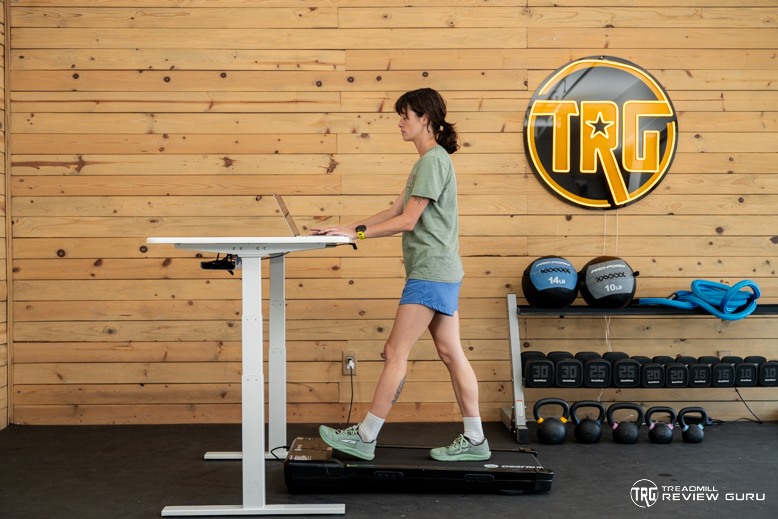
An under-desk treadmill gives you the flexibility to walk while doing other tasks.
It’s not always possible to leave your desk to go for a walk. Instead, you can try an under-desk treadmill that allows you to increase your walking time while you are on the clock. Combine an under-desk treadmill with an adjustable height or standing desk to walk whenever you would like.
While it’s difficult to walk at the prescribed heart rate zone while working, an under-desk treadmill may allow you to increase your walking time. Many under-desk treadmill users walk for multiple hours per day at a slow pace.
Research has shown that walking at 1 mile per hour for eight hours was better than sitting, taking standing breaks, and standing all day. Walking for eight hours is not appropriate for beginners. I recommend starting with smaller walking breaks and slowly building up the amount of time you spend walking. With effort and consistency, you can walk all day if you want.
Walking Intensity
When adding up your walking time, it’s important to consider the amount of time you spend walking at a leisurely pace versus in Zone 2 or higher. If you do not have a heart rate monitor, you can also evaluate your walking sessions with RPE, rate of perceived exertion. RPE is measured on a scale of 1 to 10, 1 being the easiest effort and 10 being the hardest effort. A zone 2 workout should be between 3 and 4 on the RPE scale. Aim for 150 minutes per week in this zone or at a higher intensity.
What About Faster Walks or Steeper Inclines?
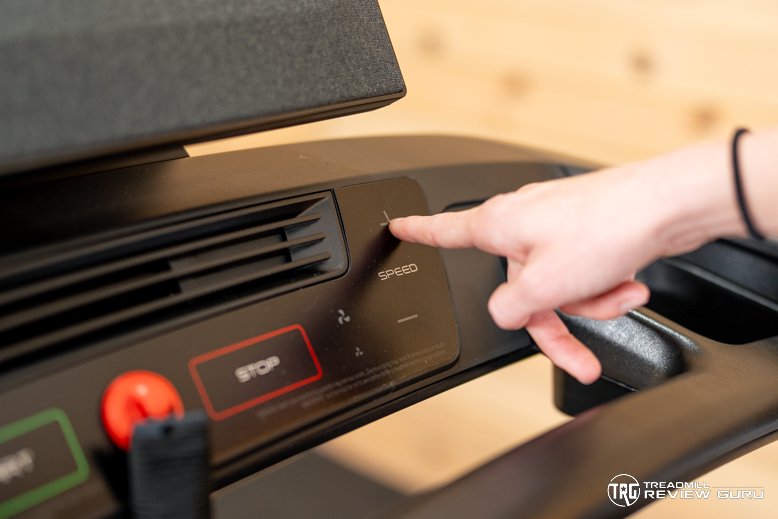
Speed can be a useful tool for increasing the intensity of your walks and getting more out of each session.
Spending time walking at a higher heart rate zone or RPE can further benefit your weight loss goals. If you don’t have the time to walk for 30 minutes to an hour, you can try HIIT workouts.
HIIT stands for high-intensity interval training. To do a HIIT workout, add 10 to 30-second intervals at a high intensity. You can also try longer intervals of 1 to 3 minutes, depending on your goals and the amount of time you have. A good strategy is to do interval workouts with different interval lengths throughout the week.
For example, try one HIIT session with short intervals under a minute and another session with intervals between 60 seconds and 3 minutes.
If you are currently walking for an hour per day in Zone 2 or at an RPE of 3 to 4, you could also benefit from adding intervals into your training. It is a great way to progress your fitness without having to increase the time you spend training. Add high-intensity intervals to one to three of your walking sessions per week.
High-intensity intervals are a great way to increase your caloric burn when walking. If you don’t have the time for 150 minutes of moderate intensity walking, you can also aim for 75 minutes of vigorous activity. This means walking at a heart rate between 70 and 85% of your maximum or an RPE of 5 to 8. Maybe 9, occasionally, if you are more experienced.
Ideally, you want to combine both moderate and vigorous walking into the same routine, meaning you should do some of both each week. When you are first starting out, you can do more of your walks at a vigorous pace. Walking may be too challenging to sustain at a lower heart rate or RPE.
As you progress, your vigorous walks should be about a quarter to one-third of your overall walking time. This does not count the total time you spend walking at an effort below Zone 2.
Slow Walking
Walking done below Zone 2 is still beneficial for weight loss and decreasing your time spent sedentary. It can decrease your risk of cardiovascular disease and diabetes.
How do you know if you are walking too much?
There are many signs of overtraining that you should look out for.
- If you have stopped making progress in your weight loss or fitness despite increasing the intensity of your routine, it may be time to rest.
- Getting sick more often or becoming injured are also signs that you should decrease your training.
- If you have been walking regularly for weeks with success and suddenly feel overly tired or hesitant to do your daily walks, take a rest day.
- Low heart rate variability, as measured by your fitness tracker
- Poor sleep
To avoid falling out of a daily walking habit, plan your rest days out so that you know when to restart your program.
Conclusion
A walking routine can be as simple as three 10-minute sessions per day, or it can include walks that last an hour or more while you work at your desk. If you have less time to dedicate to walking, make your walking sessions more intense to boost your calorie burn and reap the most health benefits.
If you have a lot of time to walk, you can spend a lot of that time walking at any easy pace. Use increased speed and incline on the treadmill to add intensity to a few of your walks per week to prevent your routine from growing stagnant. Increasing the intensity of your walks over time will help you keep up with your weight loss goals as you become a more efficient walker.
Hopefully, you now feel equipped to start or continue your walking routine with the confidence that you are progressing toward your goals.


Leave a Reply